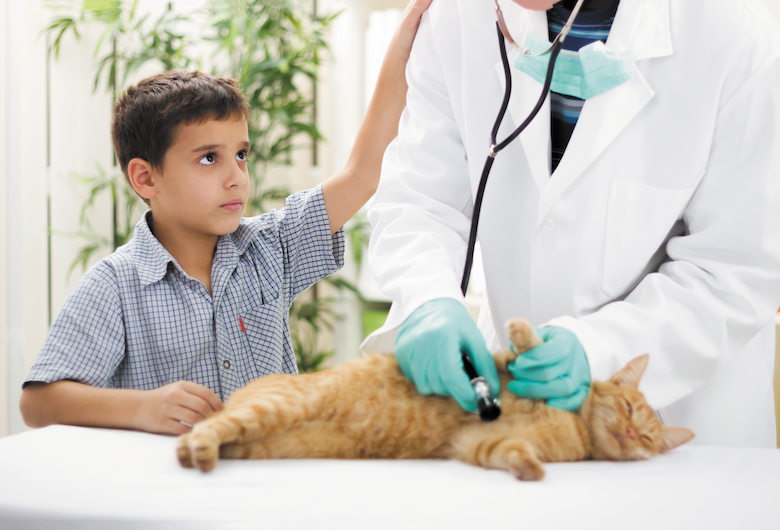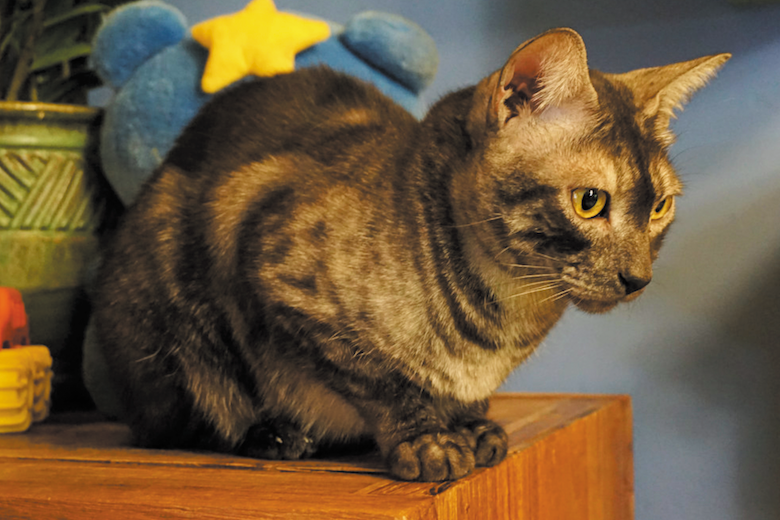Hope for a FIP Cure
The post Hope for a FIP Cure by Steve Dale appeared first on Catster. Copying over entire articles infringes on copyright laws. You may not be aware of it, but all of these articles were assigned, contracted and paid for, so they aren't considered public domain. However, we appreciate that you like the article and would love it if you continued sharing just the first paragraph of an article, then linking out to the rest of the piece on Catster.com.
Feline infectious peritonitis (FIP) might just be the worst possible diagnosis, but that’s changing. Although, just like the disease itself, the story behind those changes is complicated. But the good news is that Anivive Lifesciences and Kansas State University are working together to get approval from the FDA to bring an antiviral drug to market for FIP.
At the Winn Feline Foundation symposium “PURRsuing FIP and WINNing” held at the University of California, Davis, this past November 2019, attending researchers agreed the FIP designation should now be called “treatable,” at least potentially, and perhaps “curable.”
This was exciting news for the live audience attendees at this symposium, which included veterinary professionals, vet students, cat fanciers, shelter/rescue workers and cat lovers who have experienced FIP. The World Small Animal Veterinary Association and American Association of Feline Practitioners were also represented. Others watched the live feed of the event from around the world. This is the first time so many people came together from around the world to discuss one feline disease.

Photo: pyotr021 | Getty Image
Path to treatment
Dr. Niels Pedersen, legendary veterinary researcher, is greatly responsible for describing FIP many decades ago, and he’s been chasing a potential treatment ever since. In his talk, he explained how two drugs may now actually cure FIP. The one significant complication — these drugs aren’t currently available.
Dr. Pedersen was the first speaker of the day-and-a-half-long symposium, participating with numerous investigators from around the globe. All have at one time been funded by the nonprofit Winn Feline Foundation (which funds cat health studies). The attending scientists have studied how FIP develops, diagnosis, transmission and, now, various treatments.
Dr. Pedersen told the story of how a few years back he approached a pharmaceutical company with a hunch about using its antiviral drug GS-441524 to combat FIP. In clinical trials (see info box on page 53), even Dr. Pedersen was blown away by the drug’s effectiveness, at least for wet FIP. But, GS wasn’t readily able to cross the blood-brain barrier to treat dry or neurologic FIP. However, the pharmaceutical company didn’t pursue approval of GS-441524 from the U.S. Food and Drug Administration (FDA) for treatment of FIP or give up its patent.
Dr. Pedersen persevered in conjunction with collaborators at Kansas State University. That effort was led by Yunjeong Kim, a virologist in the College of Veterinary Medicine, who attended the symposium. Dr. Kim and her colleagues created a similar antiviral compound — known as GC376 — which also proved to have a high degree of success in treating the wet form of FIP.
Ultimately, as in treating HIV AIDS today in people, Dr. Pedersen explained the final solution will likely be several drugs. “We’ve kicked open the door to understanding; we now know the class of drug and what we’re looking for in the drugs,” he says.

Smokey suffered from an advanced case of the wet form of FIP. After being treated at UC Davis, he is now happy, healthy and FIP-free!
Getting the needed drugs
Anivive Lifesciences in Long Beach, California, has been paying attention and understands the need for a drug. David Bruyette, DVM, DACVIM, its chief medical officer, announced at the symposium that the company is in the process of procuring FDA approval for GC376 to treat FIP. However, seeing it come to market could be a long way off, though the company will attempt to “fast track” with the FDA’s Center for Veterinary Medicine to accept GC376 for Minor Use and Minor Species (MUMS) approval.
In the meantime, several companies outside the United States have jumped in, selling compounds not approved by the FDA, to treat FIP via the black market. One of the most prominent of those companies had several company representatives attend the symposium, including its chief executive officer. Also in attendance were cat owners whose cats have reportedly been cured using that particular company’s compound to the tune of about $4,000 — though the cost varies depending on the size of the cat.
So, what exactly is in this compound? Like most companies with proprietary information, the company isn’t saying.
“We don’t know what this stuff really is,” Dr. Pedersen says. “It’s definitely the Wild West out there.” He cautions veterinarians against ordering black market products, but adds there is nothing preventing a cat’s caretaker from doing so.
Peter Cohen, who raises money for FIP studies via his nonprofit organization, ZenByCat (ZenByCat.org), says that the symposium was the first time everyone was able to talk about this issue openly. He says today the only way you can try to cure an FIP cat is through the companies selling black-market drugs. If you do buy these drugs, sometimes it’s intercepted by U.S. Customs, plus there’s a pretty expensive price tag on the drug. “This isn’t ideal,” he adds. “We’d rather have an approved drug. But cats with FIP can’t wait for an approved drug.”
Other things that can be done
At the symposium, shelter professionals discussed how minimizing stress in shelters has indeed lessened the volume of FIP in shelters. “Today the highest risk groups are (overcrowded) fosters and sanctuary kittens and cats,” says Dr. Kate Hurley, program director of the UC Davis Koret Shelter Medicine Program.
Another study found that the type of cat litter may help. Dr. Diane Addie of the School of Veterinary Medicine, University of Glasgow discussed her findings in a video (as she was unable to attend the event in person).
“I wondered if the cat litter itself could be used to prevent virus transmission,” she said in the video, “and tested 15 cat litters in the laboratory at Glasgow Veterinary School. We found that bentonite-based cat litters prevented infection of subculture, then we looked at virus shedding while cats were using flat cat litters in two Danish multi-cat households which hadn’t any coronavirus infection.”
She added, “Dr. Elsey’s Cat Attract was introduced, and the number of cats shedding coronavirus reduced.
When the litter was changed, virus shedding ramped up again. When we reintroduced it, again the virus shedding reduced.”
Hope for a future FIP cure
Everyone wants to find a treatment or a possible cure for this deadly disease.
Dr. Bruyette of Anivive Lifesciences says, “We know there is a great deal of excitement on the part of pet owners and veterinarians about the FIP research that has been performed to date, through our partnership with Dr. Yunjeong Kim at Kansas State and Dr. Niels Pedersen at UC Davis, on this devastating cat disease, and we are very excited to be a part of the effort.” He further says, “We are progressing with the safety, efficacy and manufacturing work required for FDA approval.” Anivive will be posting updates and clinical trial information on its website anivive.com.
Peter of ZenByCat had two cats that were part of the UC Davis study. Miss Bean lost her battle with FIP after four weeks of treatment. Smokey, on the other hand, who suffered from the advanced wet form of FIP, showed immediate improvement. “His energy picked up within one day of starting treatment, and over the next week, the fluid was absorbed back into his body,” Peter says.
Smokey spent a week receiving treatment at UC Davis, then was sent home to complete the remaining 11 weeks of twice-daily injections. “From the end of the second week, there were no longer any visible symptoms,” Peter says.
Today Smokey is healthy and has been FIP-free since he completed his treatment in October 2016.
Top photograph: BiancaGrueneberg | Getty Images
The post Hope for a FIP Cure by Steve Dale appeared first on Catster. Copying over entire articles infringes on copyright laws. You may not be aware of it, but all of these articles were assigned, contracted and paid for, so they aren't considered public domain. However, we appreciate that you like the article and would love it if you continued sharing just the first paragraph of an article, then linking out to the rest of the piece on Catster.com.




Post a Comment